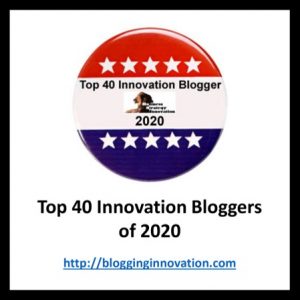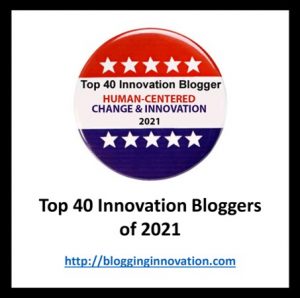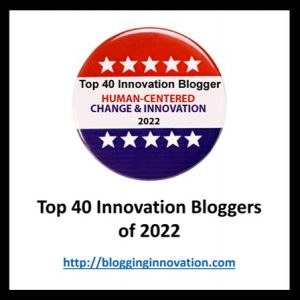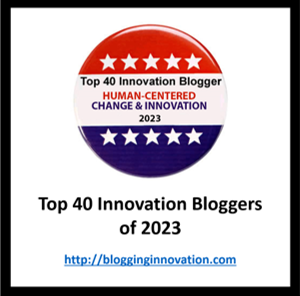Or the Making of a Superhero
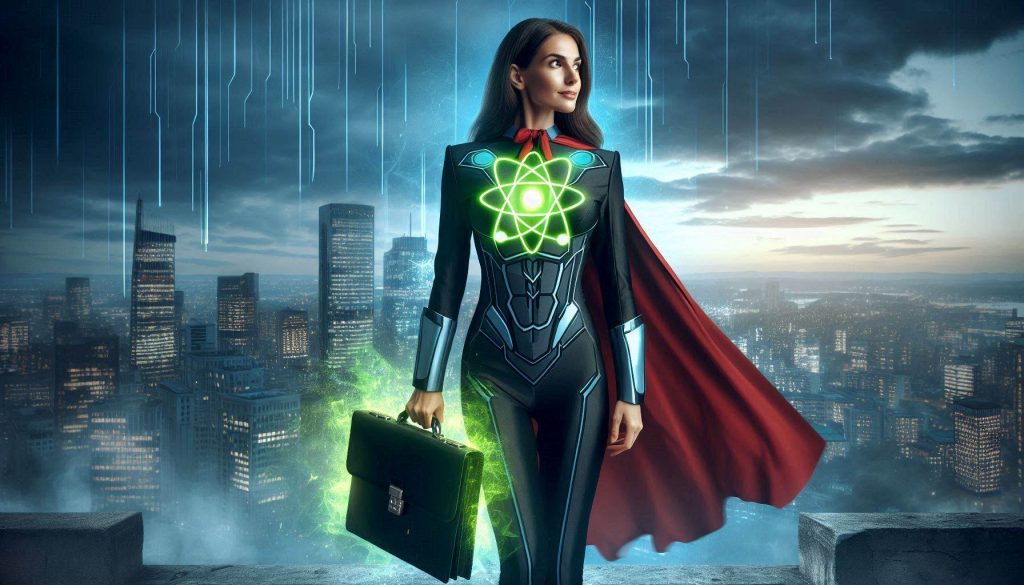
by Braden Kelley
In today’s rapidly evolving world, the consulting landscape is undergoing a profound transformation. I was recently asked a series of questions to capture my thoughts on how the consulting industry and its employees will need to evolve to thrive in the coming years – including my thoughts on the creation of “superhero” consultants. The emergence of the “superhero” consultant is not merely a result of advanced tools and technologies, but rather the cultivation of essential skills and capabilities. As we navigate through this era of unprecedented change, it is imperative for consulting firms to foster a culture of flexibility, growth, and continuous learning. The future of consulting lies in the hands of those who can seamlessly integrate human expertise with artificial intelligence (AI), build meaningful connections in a hybrid work environment, and facilitate diverse perspectives to drive innovation. This article delves into the key attributes that will define the next generation of consultants and explores the obstacles that must be overcome to unlock their full potential.
Here are the questions:
1) What are the tools and technologies that a consultant should use to become a “superhero” consultant? Why are these specific tools/technologies important? How should these tools be used most effectively?
This is the wrong question. It is not tools and technologies that will enable “superhero” consultants, but instead the development of the right skills and capabilities. The future of consulting will require consulting firms to hire and develop employees that are:
- Flexible and growth minded – the world is changing at an accelerating rate and consultants more than ever before will need to be lifelong learners, comfortable with knowledge gaps and eager to become an expert in something on behalf of the client with each new project
- AI Taskmasters – the future of work is man and machine working together and consultants skilled at breaking down work to the right size (atomizing work) and assigning it to both human and AI workers
- Socially Savvy – remote and hybrid work is here to stay and even clients have soured on having consultants travel in every week, so “superhero” consultants must excel at building connections and relationships via internal, external and client social tools to both distribute/execute work and to source new work
- Skilled facilitators – as data and AI-generated work products become plentiful, sense-making rises in importance along with a diversity of perspectives – often in workshops facilitated by consultants
- Open Sourced – gone are the days of rinse and repeat projects powered by proprietary frameworks and IP, instead “superhero” consultants will excel at identifying the right tools and frameworks to bring to bear – from FutureHacking™ to Design Thinking to the Change Planning Toolkit™
The capabilities of tools and technologies will grow over time and new ones will emerge. The best consultants will constantly be scanning the horizon for new tools, technologies, and capabilities and leverage the above skills and capabilities to unlearn and then re-learn the best ways to create value for their clients.
2) What are the biggest obstacles that prevent consultants from being able to access or learn the steps needed to become a “superhero” consultant? What should be done to remove these obstacles to help make this transformation easier for more consultants?
The biggest obstacles that prevent consultants from becoming “superheroes” are internal – to both the consultants themselves and the firms they work for. Companies will need to examine their own policies, procedures, and training programs to right-size them for this emerging new reality. Firms will need to allow consultants to pick the right frameworks, tools and technologies for addressing client challenges – instead of limiting them to those owned by the firm. Consultants will need to shift their mindset from being experts in a particular tool or technology and towards being masters of the above skills and capabilities and experts in achieving key client outcomes. Firms will need to invest in the training and the technology necessary to provide AI’s built for purpose to accelerate the ability of consultants to more efficiently and effectively solve client challenges. Firms will also need to update their tools and methods for capturing and sharing knowledge to leverage AI capabilities at the same time.
3) What specific areas of consulting (eg. IT, finance, marketing, etc.) have the greatest potential to produce this new brand of “superhero” consultants? Why?
This new brand of “superhero” consultants will excel in a number of different disciplines because they will be able to not only find more efficient and effective ways to execute work traditionally performed by consultants (technology implementations, analytical work, etc.), but as they are helping clients transform the ways they perform different types of work, they will also be able to help clients identify new activities that will be made possible by the transformation and the new technologies and ways of working they bring with it. The reason is their focus on building skills and capabilities into which tools and technologies plug in – somewhat interchangeably.
Conclusion
The journey to becoming a “superhero” consultant is not without its challenges, but the rewards are immense. By embracing a mindset of lifelong learning and adaptability, consultants can harness the power of emerging technologies to deliver unparalleled value to their clients. The future of consulting is not about rigid frameworks or proprietary tools, but about the ability to unlearn and relearn, to innovate and collaborate, and to drive meaningful change. As we look ahead, it is clear that the most successful consultants will be those who can navigate the complexities of a dynamic world with agility and foresight. Let us continue to push the boundaries of what is possible and strive to create a brighter future for the consulting industry. Keep innovating!
p.s. Be sure and follow both my personal account and the Human-Centered Change and Innovation community on LinkedIn.
Image credit: Bing Copilot (Microsoft Designer)
![]() Sign up here to get Human-Centered Change & Innovation Weekly delivered to your inbox every week.
Sign up here to get Human-Centered Change & Innovation Weekly delivered to your inbox every week.





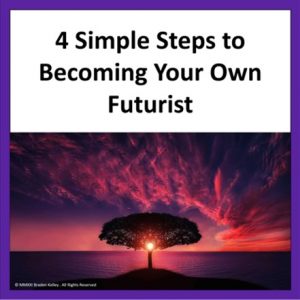





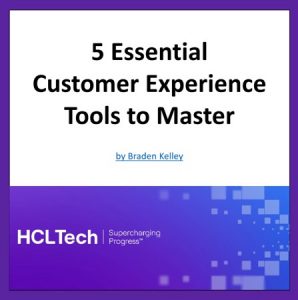
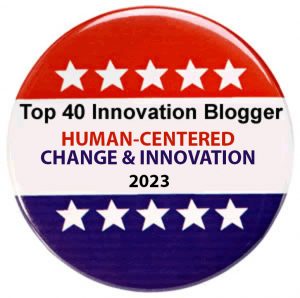 After a week of torrid voting and much passionate support, along with a lot of gut-wrenching consideration and jostling during the judging round, I am proud to announce your Top 40 Innovation Bloggers of 2023:
After a week of torrid voting and much passionate support, along with a lot of gut-wrenching consideration and jostling during the judging round, I am proud to announce your Top 40 Innovation Bloggers of 2023:

 Greg Satell is a popular speaker and consultant. His first book,
Greg Satell is a popular speaker and consultant. His first book,  Mike Shipulski brings together people, culture, and tools to change engineering behavior. He writes daily on Twitter as
Mike Shipulski brings together people, culture, and tools to change engineering behavior. He writes daily on Twitter as 

 A twenty-five year Procter & Gamble veteran, Pete has spent the last 8+ years applying insights from psychology and behavioral science to innovation, product design, and brand communication. He spent 17 years as a serial innovator, creating novel products, perfume delivery systems, cleaning technologies, devices and many other consumer-centric innovations, resulting in well over 100 granted or published patents. Find him at pete.mindmatters@gmail.com
A twenty-five year Procter & Gamble veteran, Pete has spent the last 8+ years applying insights from psychology and behavioral science to innovation, product design, and brand communication. He spent 17 years as a serial innovator, creating novel products, perfume delivery systems, cleaning technologies, devices and many other consumer-centric innovations, resulting in well over 100 granted or published patents. Find him at pete.mindmatters@gmail.com






 Soren Kaplan is the bestselling and award-winning author of Leapfrogging and The Invisible Advantage, an affiliated professor at USC’s Center for Effective Organizations, a former corporate executive, and a co-founder of
Soren Kaplan is the bestselling and award-winning author of Leapfrogging and The Invisible Advantage, an affiliated professor at USC’s Center for Effective Organizations, a former corporate executive, and a co-founder of 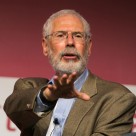
 Diana heads marketing at
Diana heads marketing at 
 Dainora (a.k.a. Dee) creates customer-centric content at Viima. Viima is the most widely used and highest rated innovation management software in the world. Passionate about environmental issues, Dee writes about sustainable innovation hoping to save the world – one article at the time.
Dainora (a.k.a. Dee) creates customer-centric content at Viima. Viima is the most widely used and highest rated innovation management software in the world. Passionate about environmental issues, Dee writes about sustainable innovation hoping to save the world – one article at the time. Arlen Meyers, MD, MBA is an emeritus professor at the University of Colorado School of Medicine, an instructor at the University of Colorado-Denver Business School and cofounding President and CEO of the Society of Physician Entrepreneurs at
Arlen Meyers, MD, MBA is an emeritus professor at the University of Colorado School of Medicine, an instructor at the University of Colorado-Denver Business School and cofounding President and CEO of the Society of Physician Entrepreneurs at 
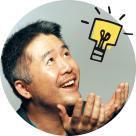 Leo is the founder of
Leo is the founder of  Rachel Audige is an Innovation Architect who helps organisations embed inventive thinking as well as a certified Systematic Inventive Thinking Facilitator, based in Melbourne.
Rachel Audige is an Innovation Architect who helps organisations embed inventive thinking as well as a certified Systematic Inventive Thinking Facilitator, based in Melbourne. Art Inteligencia is the lead futurist at Inteligencia Ltd. He is passionate about content creation and thinks about it as more science than art. Art travels the world at the speed of light, over mountains and under oceans. His favorite numbers are one and zero.
Art Inteligencia is the lead futurist at Inteligencia Ltd. He is passionate about content creation and thinks about it as more science than art. Art travels the world at the speed of light, over mountains and under oceans. His favorite numbers are one and zero.
 Phil McKinney is the Author of “Beyond The Obvious”, Host of the Killer Innovations Podcast and Syndicated Radio Show, a Keynote Speaker, President & CEO CableLabs and an Innovation Mentor and Coach.
Phil McKinney is the Author of “Beyond The Obvious”, Host of the Killer Innovations Podcast and Syndicated Radio Show, a Keynote Speaker, President & CEO CableLabs and an Innovation Mentor and Coach. Dr. Ralph-Christian Ohr has extensive experience in product/innovation management for international technology-based companies. His particular interest is targeted at the intersection of organizational and human innovation capabilities. You can follow him on Twitter
Dr. Ralph-Christian Ohr has extensive experience in product/innovation management for international technology-based companies. His particular interest is targeted at the intersection of organizational and human innovation capabilities. You can follow him on Twitter 
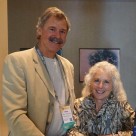 Dr. Dean Anderson and Dr. Linda Ackerman Anderson lead
Dr. Dean Anderson and Dr. Linda Ackerman Anderson lead 
 Scott Anthony is a strategic advisor, writer and speaker on topics of growth and innovation. He has been based in Singapore since 2010, and currently serves at the Managing Director of Innosight’s Asia-Pacific operations.
Scott Anthony is a strategic advisor, writer and speaker on topics of growth and innovation. He has been based in Singapore since 2010, and currently serves at the Managing Director of Innosight’s Asia-Pacific operations.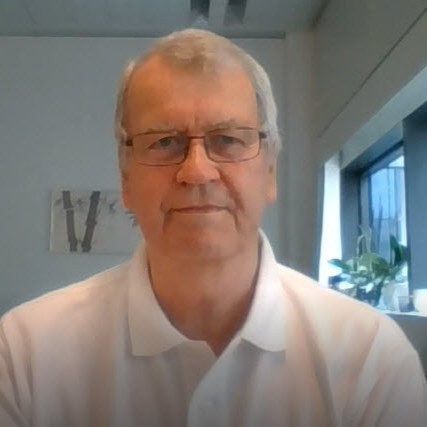 Paul Hobcraft runs
Paul Hobcraft runs 
 Chateau G Pato is a senior futurist at Inteligencia Ltd. She is passionate about content creation and thinks about it as more science than art. Chateau travels the world at the speed of light, over mountains and under oceans. Her favorite numbers are one and zero.
Chateau G Pato is a senior futurist at Inteligencia Ltd. She is passionate about content creation and thinks about it as more science than art. Chateau travels the world at the speed of light, over mountains and under oceans. Her favorite numbers are one and zero. Jesse Nieminen is the Co-founder and Chairman at
Jesse Nieminen is the Co-founder and Chairman at  As an experience architect, Alain helps leaders craft customer, employee and shareholder experiences for profit, reinvention and transformation. He does this through his personal consultancy Alain Thys & Co as well as the transformative venture studio
As an experience architect, Alain helps leaders craft customer, employee and shareholder experiences for profit, reinvention and transformation. He does this through his personal consultancy Alain Thys & Co as well as the transformative venture studio 

